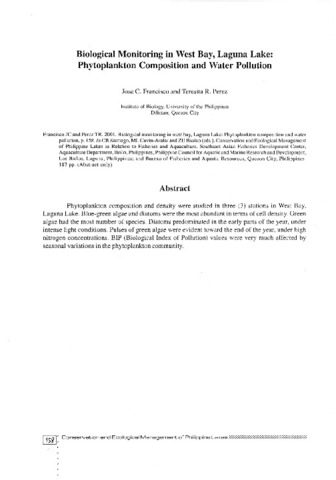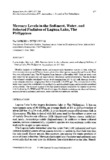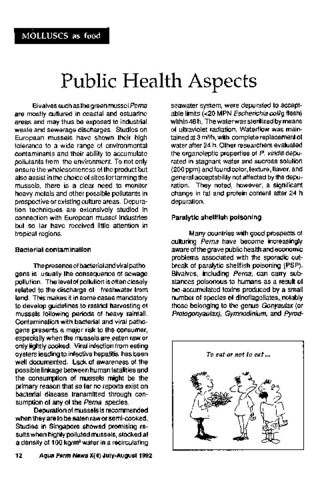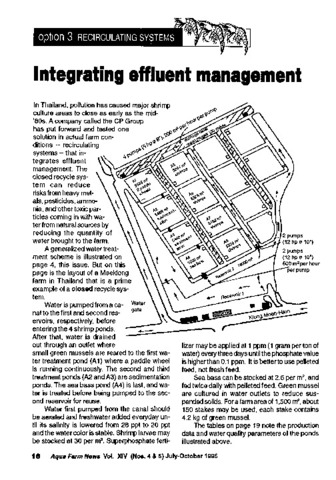Biological monitoring in west bay, Laguna Lake: Phytoplankton composition and water pollution
Share
นามธรรม
Phytoplankton composition and density were studied in three (3) stations in West Bay, Laguna Lake. Blue-green algae and diatoms were the most abundant in terms of cell density. Green algae had the most number of species. Diatoms predominated in the early parts of the year, under intense light conditions. Pulses of green algae were evident toward the end of the year, under high nitrogen concentrations. BIP (Biological Index of Pollution) values were very much affected by seasonal variations in the phytoplankton community.
Description
Abstract only.
การอ้างอิง
Francisco, J. C., & Perez, T. R. (2001). Biological monitoring in west bay, Laguna Lake: Phytoplankton composition and water pollution (Abstract only). In C. B. Santiago, M. L. Cuvin-Aralar, & Z. U. Basiao (Eds.), Conservation and Ecological Management of Philippine Lakes in Relation to Fisheries and Aquaculture (p. 158). Tigbauan, Iloilo, Philippines: Aquaculture Department, Southeast Asian Fisheries Development Center; Los Baños, Laguna, Philippines: Philippine Council for Aquatic and Marine Research and Development (PCAMRD), Department of Science and Technology; Quezon City, Philippines: Bureau of Fisheries and Aquatic Resources (BFAR), Department of Agriculture, Quezon City, Philippines.
เรื่อง
รายการที่เกี่ยวข้อง
แสดงรายการที่เกี่ยวข้องตามชื่อผู้แต่งผู้สร้างและเรื่อง
-
Mercury levels in the sediment, water, and selected finfishes of Laguna Lake, the Philippines
Cuvin-Aralar, Maria Lourdes A. (Elsevier, 1990)Monthly samples of sediment, water and commercially important species of fish, primarily Oreochromis niloticus and Chanos chanos , plus a few other species, were collected from the West Bay area of Laguna Lake, The Philippines ... -
Public health aspects: Molluscs as food
Castaños, Milagros T.; Southeast Asian Fisheries Development Center, Aquaculture Department (Aquaculture Department, Southeast Asian Fisheries Development Center, 1992) -
Integrating effluent management
Southeast Asian Fisheries Development Center, Aquaculture Department (Aquaculture Department, Southeast Asian Fisheries Development Center, 1996)The paper discusses a closed recycle shrimp farm in Thailand which integrates effluent management. The closed recycle system can reduce risk of heavy metals, pesticides, ammonia, and other toxic particles coming in with ...





